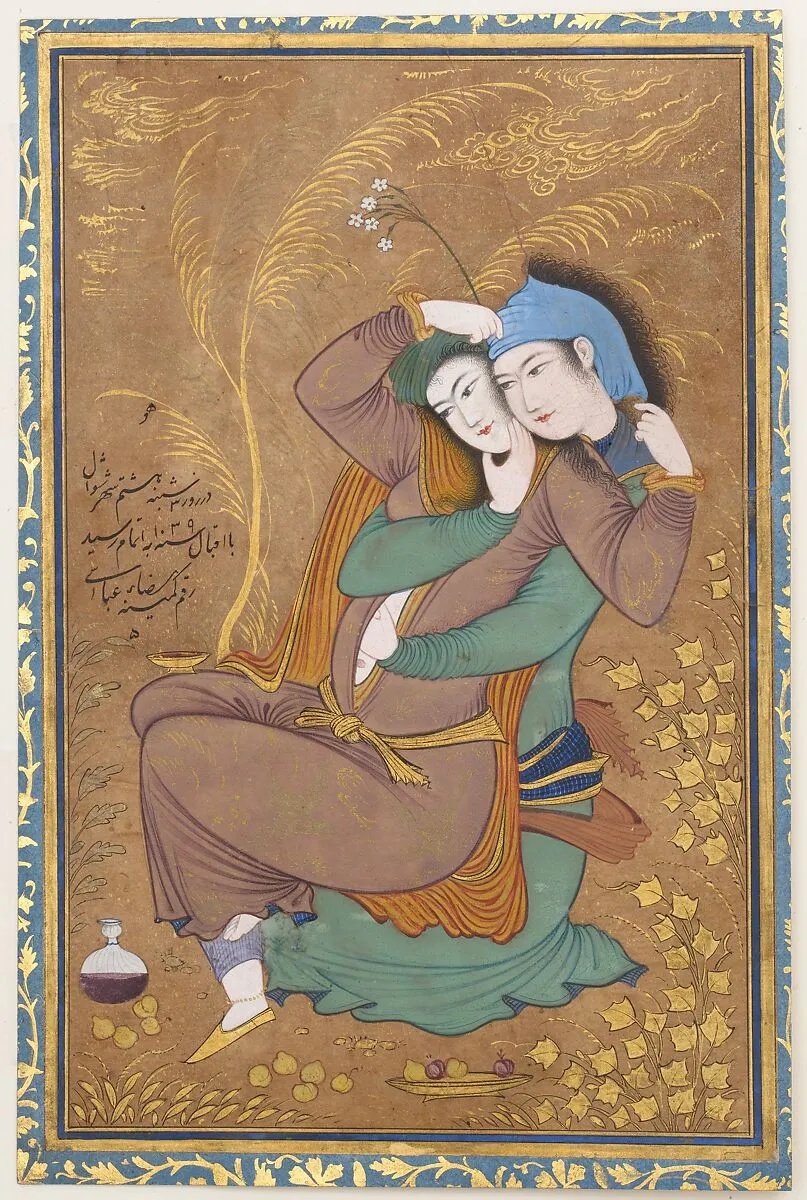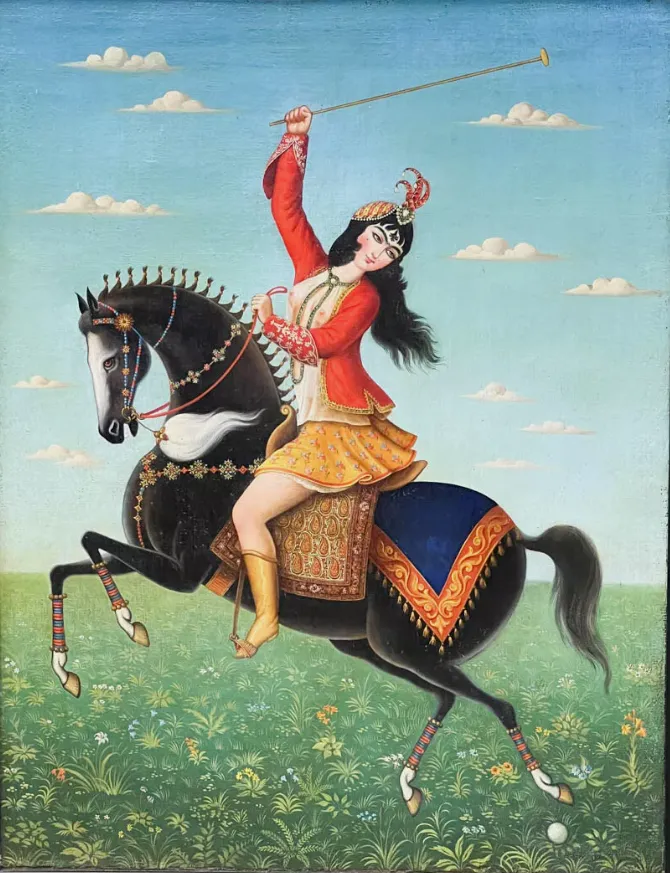 When art speaks about me
When art speaks about me
Art speaks silently but very deeply with many possible meanings and explanations that are very difficult for normal people to catch up with. But in these exhibitions that I visited several weeks ago, I found some art that is very easy to connect with. Though the imagination of artists is always abstract there are some arts that represent realistic points that can be understood by non-expert naive people regarding the knowledge of an art like me.
The articles written by my handsome friend Hassan, who was born in the Indian subcontinent and currently lives in China, always interest me!
Although I am an East Asian man, Hassan's thoughts and feelings are familiar to me!😃
I read that Hasan wrote an article about Chinese paintings. I think he was unable to use his emotions and thoughts because he was unfamiliar with Chinese paintings!
I remember that in the Islamic world, representations of people in paintings or sculptures were prohibited due to religious laws!
Ordinary East Asians like me like the art of drawing or sculpting people and animals.
So, it is difficult to understand Islamic religious law!
By the way, I like Persian art because it depicts the beauty of the human appearance and body well!
 The Lovers
The Lovers
The artist Riza‑yi 'Abbasi revolutionized Persian painting and drawing with his inventive use of calligraphic line and unusual palette. He painted The Lovers toward the end of a long, successful career at the Safavid court. The subject of a couple entwined reflects a newly relaxed attitude to sensuality introduced in the reign of Shah Safi (r. 1629–42). Here the figures are inextricably bound together, merged volumes confined within one outline.
Riza‑yi 'Abbasi's work is very famous among East Asian men.
This painting reveals a sensuality not seen in East Asian art!
Iranian easel painting from the 18th and 19th centuries occupies an important place in the history of both Iranian and global art. Owing to the fact that its initial creation and subsequent development occurred precisely during the reign of the Qajar dynasty in Iran, it is frequently referred to as Qajar or Royal Persian Painting. One of the world’s largest collections of easel paintings from the Qajar era is housed at the Shalva Amiranashvili State Museum of Fine Arts, which is a part of the National Museum of Georgia.
Iran's Qajar dynasty rose to prominence around the end of the 18th century. Its founder, Agha Mohammad Khan (1789-1797), mercilessly attacked the rulers of Iran at that time, the Zand dynasty, and subsequently externalized and strengthened the kingdom. His successor, Fath-Ali Shah (1797-1834), inherited a throne that was in dire straits: the Russian, British, and French Empires, with which the kingdom was constantly involved in diplomatic and physical conflict, remained adversaries in Iran, Afghanistan, and Central Asia. This rivalry was labeled the "Great Game," and in the political history of the nineteenth century is referred to by that name. Notwithstanding the kingdom’s terrible political circumstances, lost battles and lost territories, Fath-Ali Shah’s name is associated with the emergence of the country's cultural life. By virtue of the development of a wholly original visual style, Fath-Ali Shah was able to send specific ideological messages to both the allies and enemies of his kingdom. One of the most important messages was the close connection between dynasties and their continuity. Fath-Ali Shah renovated the palaces that had been constructed by previous monarchs, and erected portraits of their forebears on the contemporary monuments, since the Qajars were believed to be the descendants of the historical or mythological Iranian monarchs (the Qayanids, and Safavids).
During his rule, Iranian art underwent a dramatic transformation. . Throughout the new secular structures, the walls were lavishly adorned with murals and colorful, poetic paintings on canvas artworks. Through the fusion of European painting techniques with Oriental vision and style, they created entirely unique, vibrant canvases brimming with life and grace. Many years later, this novel aesthetic was referred to in academic literature as Qajar art.
The art of the Zand Dynasty (1779-794) exerted an immense influence on the formation of this style, despite the political controversy. The artistic language of the Zand era - its remarkable delicacy and sophistication of forms, the abundance of details and colorful textures, lyrical and erotic scenes, and its particular intimacy - was successfully mastered by the Qajar school, although the style is distinguished by a more subtle linear decoration, and monumentalism.
During the reign of Fath-Ali Shah, several themes and narratives often recur in Qajar painting. One is an official portrait of Fath-Ali Shah, while the other is a group portrait, in which the Shah greets us along with a large number of male and female court musicians and dancers.
Each phase of the evolution of the Qajar painting school is represented in the Iranian painting collection housed at Shalva Amiranashvili State Museum of Fine Arts . This fact particularly highlights the significance of this collection.
As previously noted, the Qajars' rise to power in Iran was accompanied by a shift in the worldview and philosophy of the ruling class, which subsequently influenced painting aesthetics and standards of beauty: a new ideal of beauty was established that differed greatly from previous ones.
The museum houses two beautiful portraits from the 18th and 19th centuries: portraits of the young Abbas Mirza and a portrait of the legendary hero of Firdausi’s Shah Name, Fereydun. We notice the half-tone modeling of his face, which is typical of Zand painting, as well as the typical ceremonial attire of Qajar art: brilliantly colored clothes (the red garment of Fereydun), and certain accessories. The portrait of Fereydun is signed by the artist Haji Agha Jan.
I especially like THE ERA OF QAJAR ART!
The QAJAR dynasty created a splendid and intense beauty by harmonizing European art and Persian art!

The charm of Iranian women riding horses and playing polo was completely different from East Asian women!
The reason I was fascinated by the art of the Qajar period in Persia is because of the charm of Iranian Aryan women who lived freely without being bound by Islamic law!
The art of the Qajar period, which freely and colorfully depicts various human appearances, actions, and emotions, is definitely attractive to East Asian men!
However, Islamic art is not very well known to East Asian men!